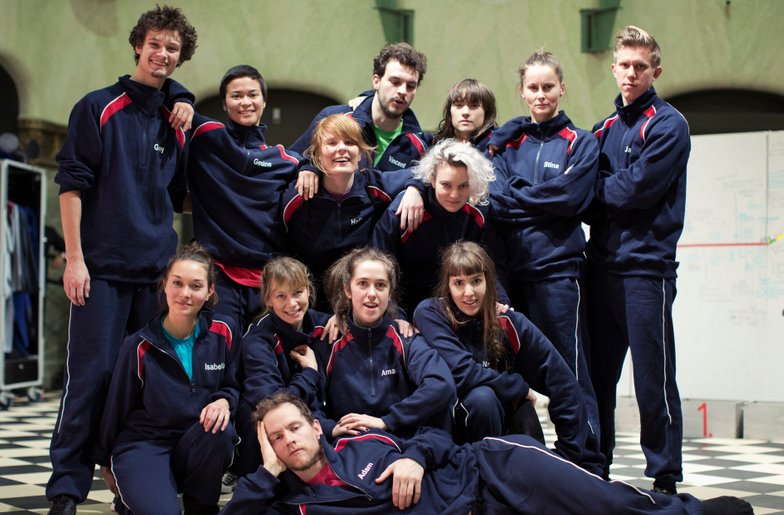Cullberg
Photo: Märta Thisner
2013
Samlingen - The Cullberg version
SAMLINGEN is a collection of past, present and future related Cullberg stuff.
SAMLINGEN is an exhibition of a collection of past, present and future related Cullberg stuff.
SAMLINGEN is 14 people, collecting.
SAMLINGEN is what it wants to be.
In the room there is Amanda Apetrea, Jac Carlsson, Isabella Edlund, Unn Faleide, Åsa Lundvik Gustafson, Nadja Hjorton, Gesine Moog, Stina Nyberg, Halla Ólafsdóttir, Zoë Poluch, Adam Schütt, Grey Timmers, Vincent Van der Plas and Patricia Vázquez.
In the room there are 14 dancers. In the room there are 14 choreographers. In the room there are 14 mad dancers. In the room there are 14 euphoric people dancing. In the room there are 14 dancing choreographers. In the room there is no nothing. In a room. In the bank hall 14 people are spreading out. In the bank hall, on the main shopping street, in the capital city of Sweden, 14 dancers are shifting shape. They are the Cullberg collection.
SAMLINGEN is a movement that includes a dance company and takes place in a dance museum. It is a feminist movement, against stagnation in time.
SAMLINGEN inhabits, inhibits and exhibits the bank hall.
SAMLINGEN collects ephemeralities: dancing as physical yearning, as social movement, as history, as (art)work, as work and as collectivity generated by doing.
SAMLINGEN is here.
Welcome to Cullberg Town.
Yours sincerely,
Amanda Apetrea, Nadja Hjorton, Stina Nyberg, Halla Ólafsdóttir and Zoë Poluch
SAMLINGEN - a new collection of the dance museum.
Vernissage Saturday 7th and Sunday 8th of December 2013.
“Could we dance the exhibition rather than exhibiting the dance?”
Speculating about an alternative past and a possible future, six dancers - Åsa Lundvik Gustafsson, Jac Carlsson, Gesine Moog, Patricia Vázquez, Adam Schütt and Vincent Van der Plas - who embody the rich and acclaimed history of the Cullberg Ballet and five freelance choreographers – Amanda Apetrea, Nadja Hjorton, Stina Nyberg, Halla Ólafsdóttir and Zoë Poluch will construct a new collection for the museum of dance.
For two weeks they will inhabit, inhibit and exhibit the material of the museum – the artifacts, ideologies, costumes, dances, personalities, choreographies, masks, movements and politics.
Through contesting, re-animating, and fabricating the collection’s herstories and histories they transform the museum, but not just any museum, they transform the museum of dance. What can dance and the act of dancing teach the museum? What can be learnt here, in this place reserved to preserve the past, about our present moment? What does this site of herstory making and history breaking do to current choreographic ambitions, physical yearnings and social bodies? How can one think about dancing in this context: dancing as a physical activity, as a social movement, as an historical event, as a work, as work and as a knowledge produced by doing?
The activities at the Dance museum will be open for visitors from December 3rd – 13th. We host a vernissage on Saturday 7th and Sunday 8th of December from 17-20 - the grand opening with performance events, drinks, mingling and uncovering of the new collection - SAMLINGEN. After the vernissage, the exhibition is officially open. Join us in the reconstruction of a dance, the archiving of nearly lost contemporary choreographies, the building of a forgotten scenography and the dragging of a costume.
Photo: Märta Thisner


